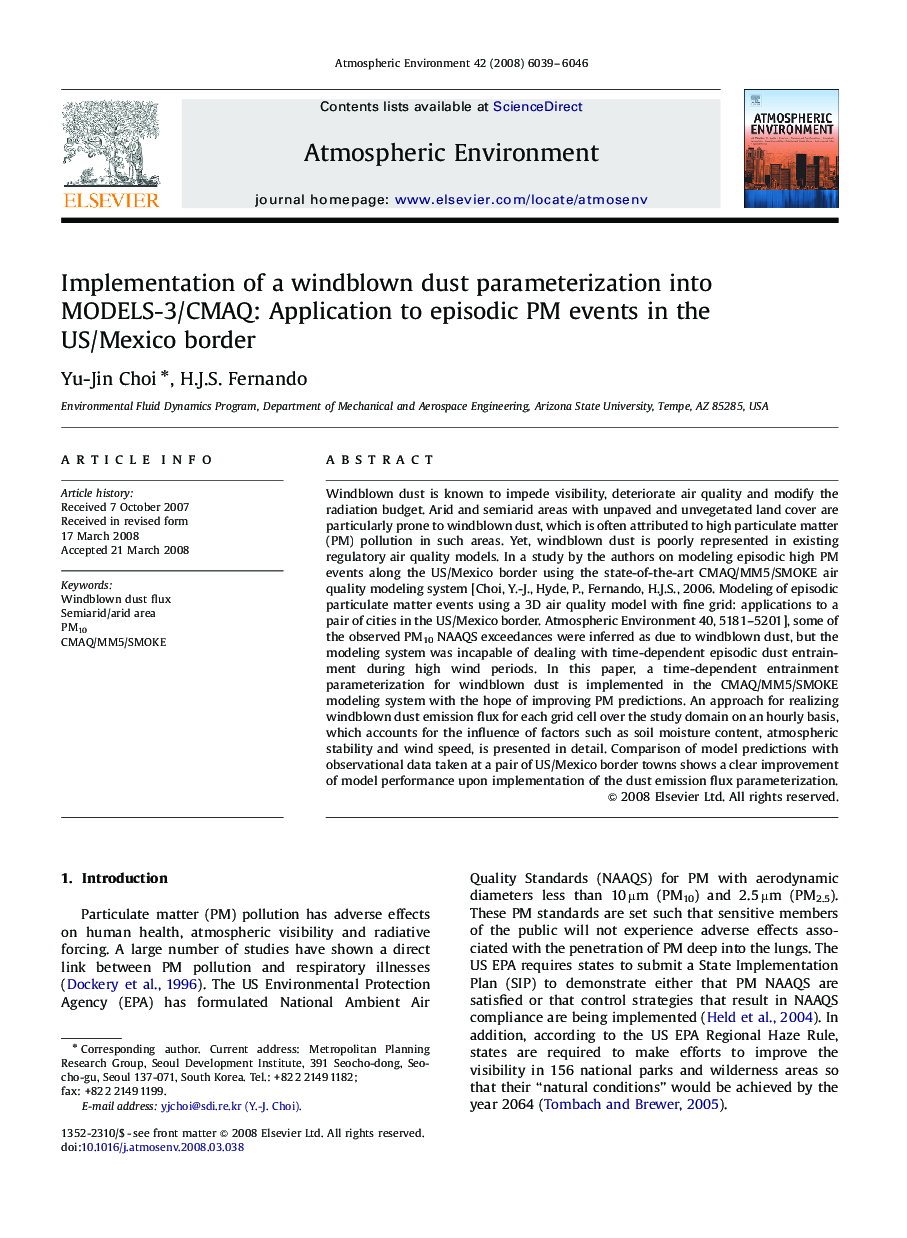| Article ID | Journal | Published Year | Pages | File Type |
|---|---|---|---|---|
| 4442764 | Atmospheric Environment | 2008 | 8 Pages |
Windblown dust is known to impede visibility, deteriorate air quality and modify the radiation budget. Arid and semiarid areas with unpaved and unvegetated land cover are particularly prone to windblown dust, which is often attributed to high particulate matter (PM) pollution in such areas. Yet, windblown dust is poorly represented in existing regulatory air quality models. In a study by the authors on modeling episodic high PM events along the US/Mexico border using the state-of-the-art CMAQ/MM5/SMOKE air quality modeling system [Choi, Y.-J., Hyde, P., Fernando, H.J.S., 2006. Modeling of episodic particulate matter events using a 3D air quality model with fine grid: applications to a pair of cities in the US/Mexico border. Atmospheric Environment 40, 5181–5201], some of the observed PM10 NAAQS exceedances were inferred as due to windblown dust, but the modeling system was incapable of dealing with time-dependent episodic dust entrainment during high wind periods. In this paper, a time-dependent entrainment parameterization for windblown dust is implemented in the CMAQ/MM5/SMOKE modeling system with the hope of improving PM predictions. An approach for realizing windblown dust emission flux for each grid cell over the study domain on an hourly basis, which accounts for the influence of factors such as soil moisture content, atmospheric stability and wind speed, is presented in detail. Comparison of model predictions with observational data taken at a pair of US/Mexico border towns shows a clear improvement of model performance upon implementation of the dust emission flux parameterization.
